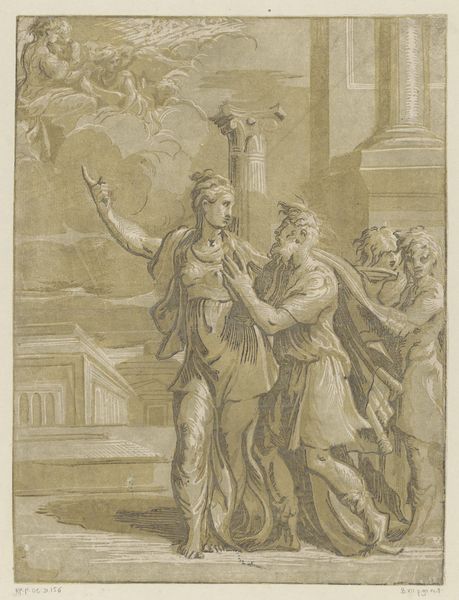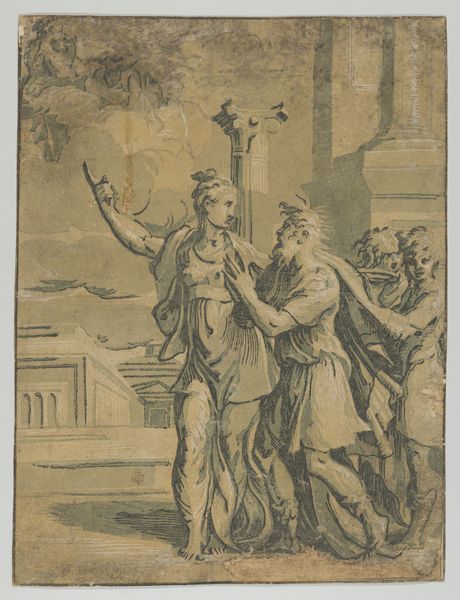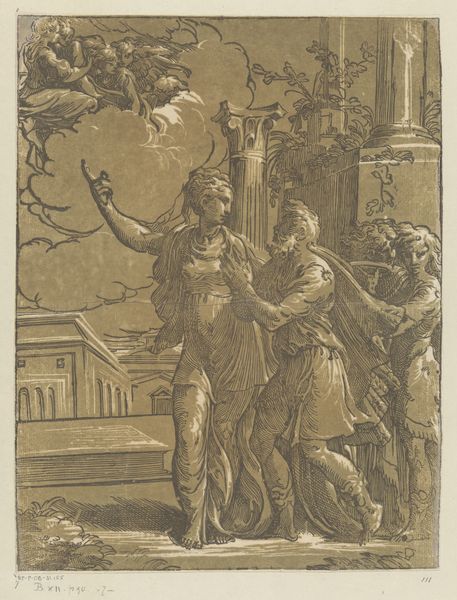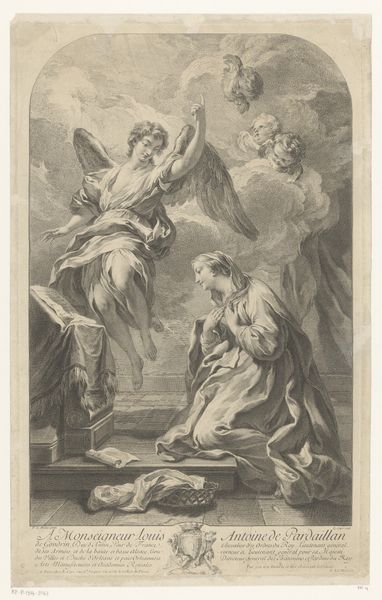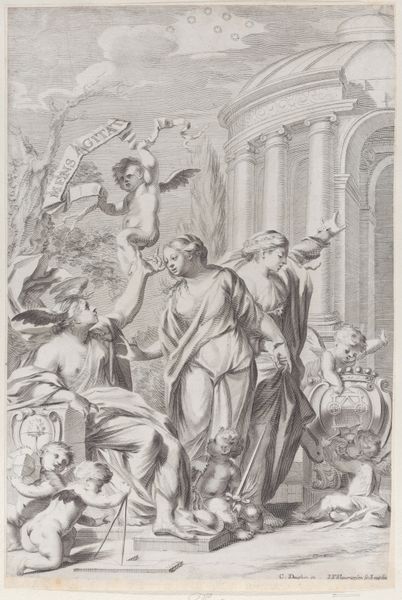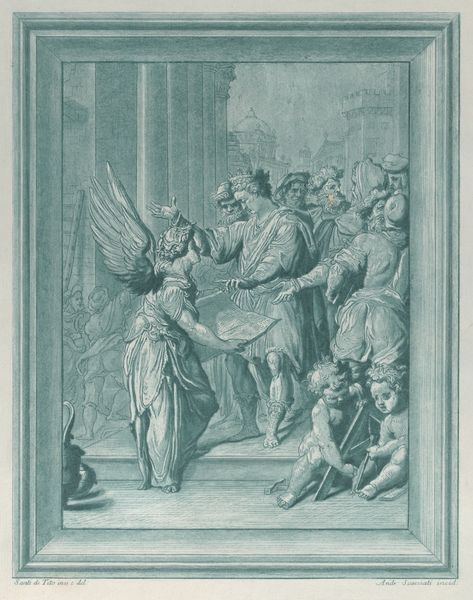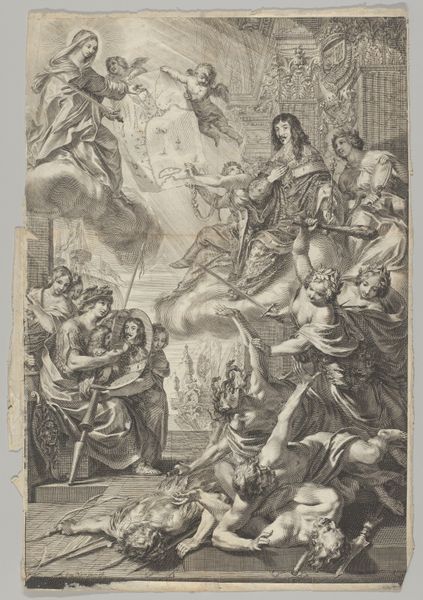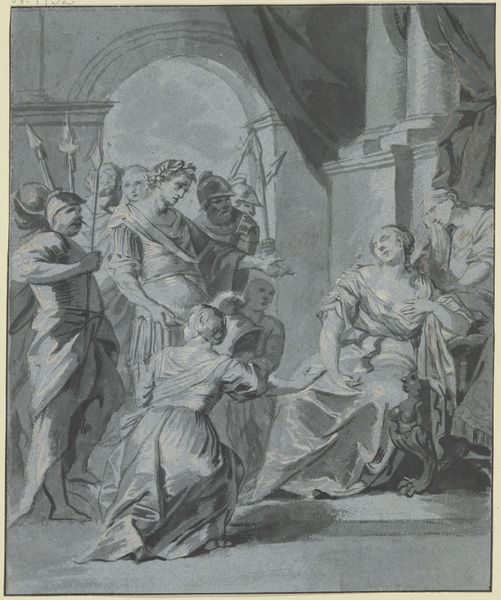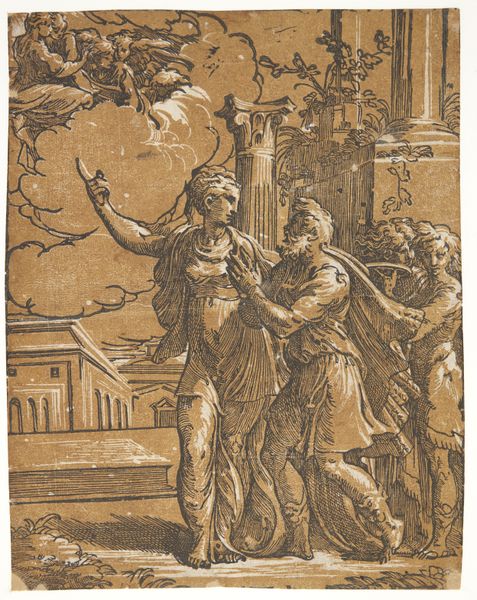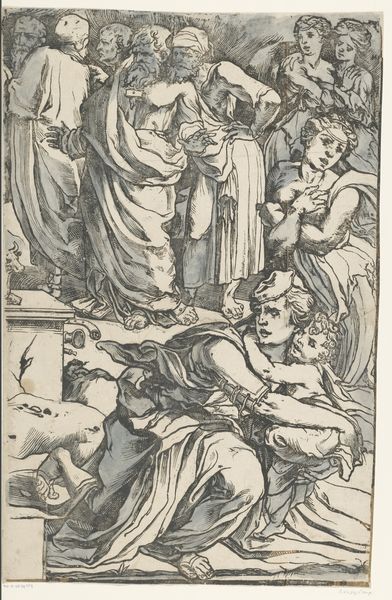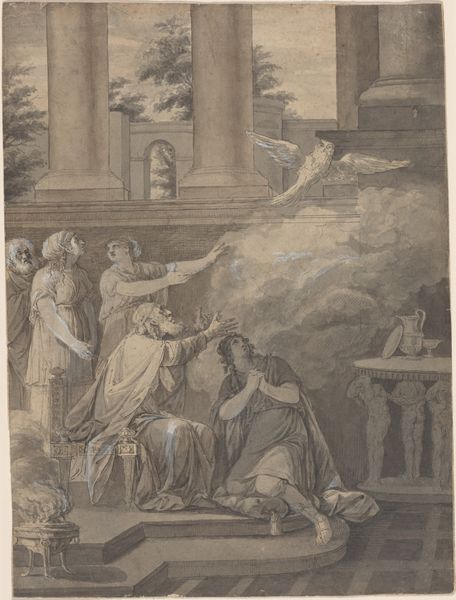
The Tiburtine Sibyl showing Emperor Augustus the Virgin and Christ Child 1525 - 1535
0:00
0:00
drawing, print, charcoal
#
drawing
# print
#
charcoal drawing
#
figuration
#
11_renaissance
#
charcoal
#
history-painting
Dimensions: Sheet: 13 7/8 × 10 5/8 in. (35.3 × 27 cm)
Copyright: Public Domain
Editor: So, this drawing from the 1520s or 30s, "The Tiburtine Sibyl showing Emperor Augustus the Virgin and Christ Child," is by an unknown artist and it's done in charcoal. It’s such a busy composition. What's your take on it? What stands out to you? Curator: Well, it zaps me right back to art history lectures! What always tickled me is the merging of classical figures with Christian imagery. See how the Sibyl, straight outta Greek mythology, points upwards? And Augustus, looking like he’s just seen a ghost, gets a divine preview of the Virgin and Child floating in a cloud. The architecture feels…staged, doesn’t it? Like the set of a play about clashing worldviews. Editor: That blending of worlds is so interesting. I hadn't thought of it as a "staged" kind of setting before. What does that imply? Curator: For me, that theatrical quality asks: How do you bridge pagan Rome and nascent Christianity? Is it a smooth transition, or a bit… forced? Look at Augustus’s cloak billowing as his courtiers peer. What's his body language communicating? A question mark in human form! I'm always seeking some personal connection within artworks and pondering how these figures reacted. Editor: It’s definitely more nuanced than I initially thought! It feels like a conversation, not just a straightforward depiction. Curator: Precisely! Art isn’t about answers; it’s about posing better questions, even if they're draped in charcoal dust. We might never unearth all the historical clues or creative choices, yet reflecting through that mystery ignites the senses. Editor: That makes you look at art...well, differently! I'll certainly approach things with more openness now!
Comments
No comments
Be the first to comment and join the conversation on the ultimate creative platform.
